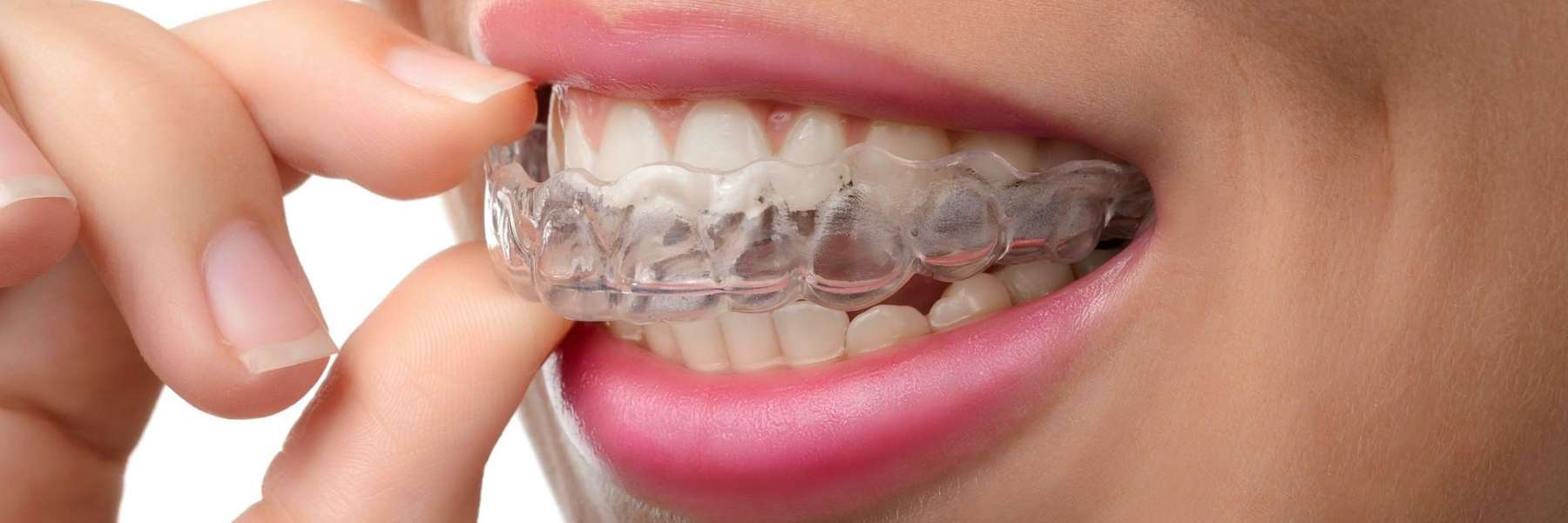
Choosing the right orthodontic treatment is vital. Traditional metal braces? Or Invisalign®?
Each of these highly effective options presents its own benefits and drawbacks as it moves your teeth into alignment. Understanding these pros and cons is crucial to deciding which is best suited to your preferences and oral health profile.
Invisalign and Traditional Braces: What Are They and How Do They Work?
Invisalign is an innovative orthodontic solution that employs sets of clear, mouthpiece-like aligners to gradually and discreetly guide teeth into alignment. To ensure optimal results, these removable aligners must be worn for 20-22 hours per day, with removal only for brushing, flossing, eating, and drinking beverages other than water. Each set of aligners is worn for about two weeks before a new set is introduced, for a total period of (typically) 12 to 18 months.
Traditional metal braces, meanwhile, use brackets that are attached to the fronts of teeth and connected by wires to apply constant pressure to teeth and, through adjustments by an orthodontist, move them into the desired position. Unlike Invisalign’s aligners, traditional braces exert consistent pressure on the teeth to encourage gradual movement.
Effectiveness and Treatment Duration
Both Invisalign and traditional braces are highly effective at straightening teeth and correcting orthodontic issues like misalignment, overcrowding, gaps between teeth, overbites, underbites, and crossbites. Generally speaking, Invisalign aligners are best suited to treating mild to moderate alignment issues discreetly. However, traditional braces are often more effective for more severe cases. The full Invisalign treatment typically takes less time than traditional braces, though the exact treatment duration for each varies depending on individual circumstances.
Comfort and Convenience
Invisalign aligners are removable, allowing for easier eating, brushing, and flossing compared to traditional braces. They also tend to cause less discomfort and irritation to the mouth and gums. Invisalign also requires fewer in-office visits for adjustments.
However, traditional braces provide more consistent pressure on the teeth. Also, as they don’t rely on a patient’s adherence to treatment guidelines for optimal results, traditional braces sometimes yield faster and more precise results.
Aesthetic and Lifestyle Considerations
The most significant advantage of Invisalign is its aesthetic appeal. Invisalign’s clear aligners are virtually invisible, making them an attractive option for individuals concerned about the appearance of metal braces. They’re also more amenable to day-to-day comfort during the treatment, as they present no dietary restrictions or obstacles to proper oral hygiene practices.
Cavity Prevention and Dental Fillings in Brandon, FL
If you’re in the Brandon, FL, area and looking for a skilled dental care team to help you navigate the decision between Invisalign and traditional braces and support you for the duration of the treatment of your choosing, contact dentist Dr. Sarah Barr and our friendly and knowledgeable Walker & Barr, DMD team to schedule a consultation!
